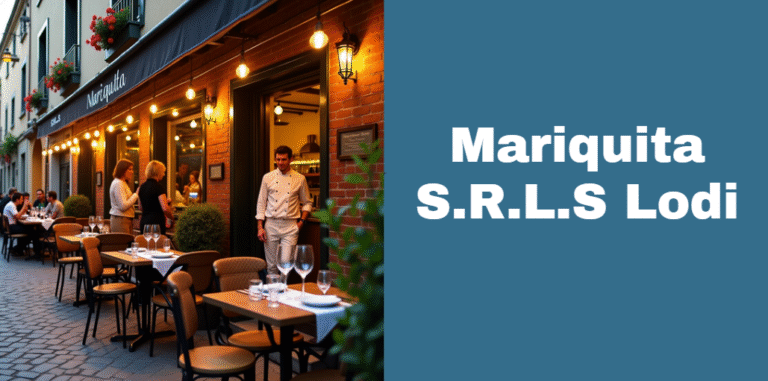Landscapes Tailored: Designing Outdoor Spaces That Fit Your Life
In today’s world, personalization is everything. From the clothes we wear to the apps we use, everything is customized to fit our lifestyle and your outdoor space should be no exception. The concept of landscapes tailored to your personal needs and preferences is a revolutionary shift from the cookie-cutter yards of the past.
Tailored landscaping is about more than aesthetics; it’s about creating a harmonious space that enhances your daily life, supports your habits, and reflects your personality. Whether you’re someone who enjoys gardening, hosting dinner parties under the stars, or simply relaxing in solitude, a customized landscape makes all the difference.
Understanding What “Tailored” Really Means
A tailored landscape goes beyond standard layouts and generic plantings. It starts with understanding the homeowner’s lifestyle and how they envision using their outdoor space. It considers practical needs like shade, privacy, and accessibility, as well as emotional needs like peace, joy, and creativity.
Imagine a backyard that feels like an extension of your living room or a garden that mirrors your favorite travel destination. That’s the magic of tailored landscaping. Every element, from the patio design to the flower choices, is handpicked to align with your taste and routine.
Why Lifestyle Assessment is Essential
Before any work begins, a professional designer or even a DIY enthusiast must take a close look at lifestyle factors. Are there children or pets in the household? Does the owner enjoy cooking outdoors? Are they morning coffee drinkers or evening stargazers? These small details guide the design process and ensure the end result is not just attractive but deeply functional.
A family with young kids might need open lawn areas and secure boundaries, while a couple who hosts wine nights will need an elegant outdoor lounge. Tailored landscaping turns wish lists into walkable, livable realities.
Evaluating the Natural Potential of Your Land
Every yard has its own natural gifts and challenges. Soil type, sunlight patterns, drainage, and topography all play significant roles in what’s possible and what’s ideal. Tailoring a landscape involves working with these conditions rather than against them.
For example, a sunny, sloped backyard can become a terraced garden bursting with wildflowers and herbs, while a shaded, flat yard might benefit from ferns, mosses, and cozy seating nooks. Taking the time to understand your property’s existing traits allows you to create a landscape that thrives naturally and looks cohesive year-round.
Creating Function-Driven Outdoor Zones
One of the keys to a successful tailored landscape is defining zones based on function. Just like rooms in a house, outdoor zones should serve specific purposes. There might be a dining area with a pergola and string lights, a reading nook surrounded by fragrant lavender, or a small yoga deck tucked away in a corner.
By separating spaces according to activity, your landscape becomes more versatile and user-friendly. These zones can be divided with pathways, raised planters, or natural screens like hedges and trees, ensuring a seamless yet functional layout.
Personalizing with Hardscape and Softscape Elements
The most compelling landscapes tailored to individuals use a thoughtful mix of hardscape (non-living materials) and softscape (living elements). Hardscape features like patios, retaining walls, water fountains, and fire pits create structure and accessibility. Softscape elements like flowers, trees, and grasses bring texture, movement, and life.
For example, a Zen-inspired garden might include a gravel path with strategically placed stones and bamboo, while a Tuscan-style retreat could feature terracotta tiles, olive trees, and lavender borders. When these elements are selected to reflect your personal taste, they form a cohesive outdoor sanctuary.
Choosing Plants That Match Your Vision and Region
Plant selection is one of the most personal and impactful aspects of landscaping. A tailored design doesn’t just pick pretty plants it chooses the right plants. That means considering maintenance levels, seasonal interest, regional compatibility, and personal preferences.
Native plants are often the best choice because they are adapted to local conditions and require less upkeep. On the other hand, some homeowners may prefer exotic or rare varieties that evoke travel memories or create a specific theme. Either way, the goal is to create a vibrant, balanced palette that offers beauty throughout the year.
Designing for Every Season
A well-tailored landscape isn’t just for spring and summer. It’s designed to offer visual interest in all four seasons. This might include evergreens that provide structure in winter, flowering shrubs that bloom in early spring, and colorful foliage in fall.
With careful planning, your outdoor space can have layers of interest—like ornamental grasses that sway in winter winds or winterberry bushes that attract birds. A landscape that’s alive and engaging throughout the year provides emotional benefits and keeps you connected to nature no matter the weather.
Sustainable Practices in Custom Landscaping
Incorporating sustainability into your tailored landscape isn’t just trendy it’s responsible and often cost-effective. Eco-friendly design strategies such as rain gardens, permeable pavers, and drought-tolerant plantings help conserve water and support local ecosystems.
Using solar-powered lights and installing smart irrigation systems also helps reduce energy use and operating costs. Sustainability doesn’t mean sacrificing style. In fact, many green solutions like using recycled materials or natural stone add charm and authenticity to your outdoor design.
Technology as a Design Tool
Modern landscaping has embraced technology in a big way. Today, you can visualize your custom landscape before a single shovel hits the ground using 3D design software or augmented reality tools. These programs allow designers and homeowners to tweak every element from tree placement to lighting providing full control over the final product.
There are also smart garden gadgets like weather-based irrigation controllers, automated lawn mowers, and garden apps that send you care reminders. Technology allows homeowners to personalize their outdoor environment more efficiently and effectively than ever before.
Working with Landscaping Professionals
While some people have the vision and skills to DIY their tailored landscape, many benefit from hiring professionals. A landscape architect can tackle large, complex designs and help navigate zoning rules or drainage issues.
A landscape designer offers creative solutions for residential-scale projects and typically works with installers to bring ideas to life. When hiring a pro, always look at portfolios, check reviews, and make sure they understand your vision. A collaborative approach ensures that your ideas are realized beautifully and practically.
Phasing Your Landscape Over Time
A common misconception is that landscaping has to be completed all at once. In reality, phasing your project can make it more affordable and manageable. Start with a master plan that outlines all your goals, then break the project into stages based on priority and budget.
Perhaps begin with hardscaping and essential infrastructure like irrigation, then add plants and decorative features later. This approach allows your landscape to grow and evolve alongside your lifestyle, with each phase tailored to your current needs and finances.
Low-Maintenance by Design
Not everyone enjoys gardening or yard work—and that’s okay. A landscape can be designed to look great with minimal upkeep. Choose slow-growing shrubs, ground covers instead of lawns, and materials like mulch or gravel to suppress weeds.
Automatic irrigation and solar lighting reduce manual effort. With smart planning, your tailored outdoor space can stay lush and lovely with very little ongoing work. The goal is to have a yard that gives back more than it demands.
Common Pitfalls to Avoid
Even custom designs can go wrong if certain things are overlooked. Avoid overloading your space with too many features or trendy items that don’t serve a long-term purpose. Function should always come before flair.
Additionally, failing to plan for proper drainage, maintenance, or future changes in family needs can turn a dream yard into a source of stress. A truly tailored landscape balances beauty, functionality, and foresight.
Conclusion
A tailored landscape is more than a pretty backyard it’s a reflection of who you are and how you live. By aligning design with your personal lifestyle, preferences, and local environment, you can create an outdoor space that serves as a daily source of joy and peace.
Whether your vision is a family-friendly garden, a sophisticated entertainment area, or a simple retreat for reflection, custom landscaping turns imagination into reality. It invites you to step outside, breathe deeply, and enjoy a space that’s unmistakably yours.
Recommended Articles
MSI Quartz vs Vadara: A Complete Comparison for Homeowners & Designers
0-Saiji Start Dash Monogatari Manga Coffee Manga – Full Story Guide, Characters & Impact
Discovering Albert Sedighpour DOB and His Legacy in Sustainable Construction






